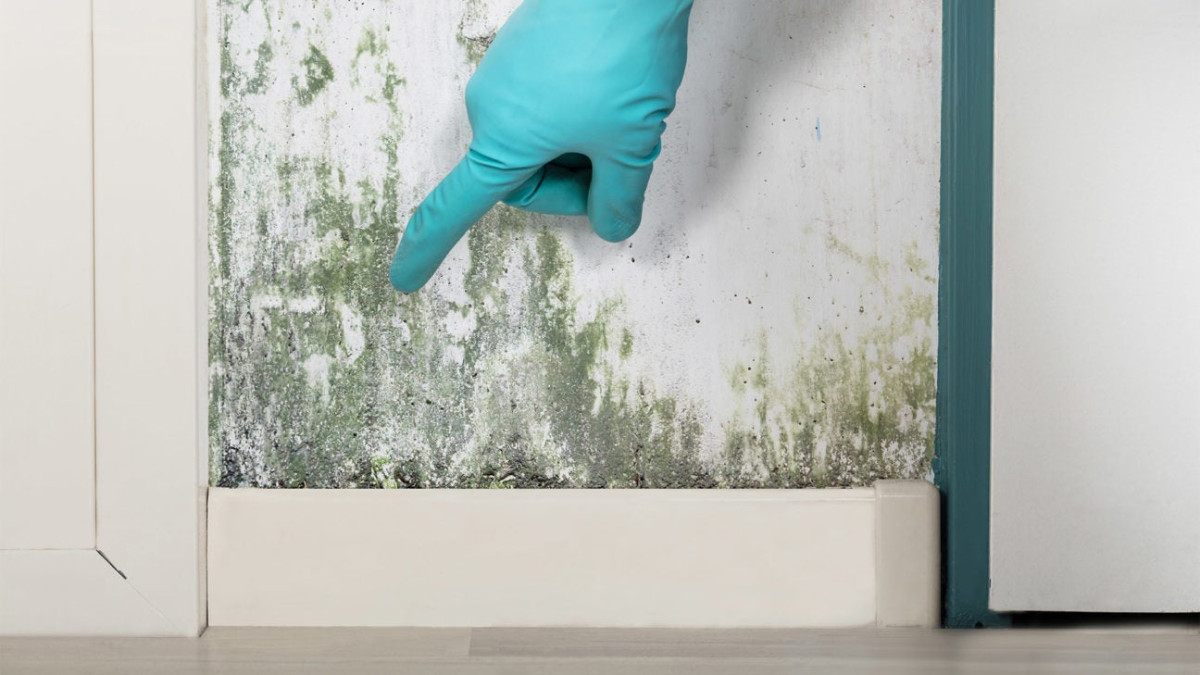Have you ever noticed a musty smell or unsightly spots on your beloved furniture? It could be more than just an aesthetic issue.
Mold on furniture is not just a nuisance; it could be a hidden threat to your health. Imagine the couch you relax on after a long day or the dining table where your family gathers becoming a silent enemy. Mold spores are tiny, invisible to the naked eye, and can easily travel through the air, impacting your well-being in ways you might not expect.
Understanding the risks and knowing how to address them could be crucial for your health and your home environment. Dive deeper into this article to uncover how mold can affect you and what steps you can take to protect yourself and your loved ones.

Credit: www.reddit.com
Health Risks Of Mold Exposure
Have you ever walked into a room and felt your throat itch or your eyes water? It might not just be allergies or a change in weather; mold on furniture could be the culprit. Mold exposure isn’t just an aesthetic issue—it’s a real health risk. Understanding how mold affects your well-being is crucial, especially if you have moldy furniture lurking in your living spaces.
What Happens When You Breathe Mold?
Breathing in mold spores can cause immediate discomfort. You might notice sneezing, coughing, or a runny nose. It can feel like you’re catching a cold, but it’s really your body reacting to mold. People with asthma or allergies are at even higher risk. Their symptoms can worsen, leading to more serious health issues.
Long-term Effects Of Mold Exposure
Living around mold for a long time can lead to chronic health problems. You might experience persistent headaches or fatigue. Some individuals develop respiratory issues that don’t go away easily. It’s not just about feeling a bit off; prolonged exposure can seriously impact your quality of life.
How Mold Affects Children And The Elderly
Children and elderly individuals are more vulnerable to mold-related health risks. Their immune systems aren’t as robust, making them more susceptible to infections. Mold exposure can lead to developmental problems in kids. For the elderly, existing health conditions might worsen, creating additional complications.
Identifying Mold-related Symptoms
Recognizing symptoms related to mold exposure is key to addressing the issue. You might notice skin rashes or eye irritation. Do you find yourself unusually tired or experiencing mood swings? These could be signals from your body reacting to mold. Identifying these symptoms early can help you seek proper treatment and remove mold sources.
Practical Steps To Reduce Mold Exposure
So, what can you do to protect yourself? Start by inspecting your furniture for signs of mold. Look for discoloration or a musty smell. Regular cleaning and ventilation can help prevent mold growth. If you find mold, consider consulting a professional for removal. Prioritize your health by keeping your living environment mold-free.
Have you ever wondered why some environments make you feel healthier than others? Could it be the hidden mold? Understanding the health risks associated with mold exposure empowers you to take action. Don’t let mold compromise your well-being; address it head-on and breathe easier in your home.

Credit: www.bmscat.com
Identifying Mold On Furniture
Mold on furniture can be a hidden health threat. Identifying mold early can prevent sickness. Mold often thrives in damp and humid environments. It can appear on various types of furniture, including wood and upholstery.
What Does Mold Look Like?
Mold can vary in appearance. It may look fuzzy or slimy. Colors range from green, black, white, to even orange. Some molds have a powdery texture.
Where Does Mold Grow?
Mold usually grows in areas with poor ventilation. Basements and attics are common culprits. Mold can hide under furniture or inside cushions.
Signs Of Mold Infestation
Watch out for musty odors. Discoloration or spots on furniture are warning signs. Allergic reactions can also indicate mold presence.
Use Your Senses
Trust your sense of smell to detect mold. Musty smells often accompany mold growth. Feel the texture of your furniture for any unusual dampness.
Inspect Regularly
Regular checks can help you spot mold early. Look under cushions and in crevices. Pay attention to areas with high humidity.
Preventing And Removing Mold
Mold on furniture can lead to health issues. Understanding how to prevent and remove it is crucial. Mold thrives in damp, dark places. It can cause allergies, asthma, or worse. Maintaining a clean and dry environment is key.
How To Prevent Mold On Furniture
Keep your home well-ventilated. Open windows for fresh air. Use exhaust fans in kitchens and bathrooms. Control indoor humidity levels. A dehumidifier can help. Clean furniture regularly. Dust and vacuum often. Check for leaks in your home. Fix any immediately.
Removing Mold From Furniture
Wear protective gear before starting. Gloves and masks are important. Start by moving the affected furniture outside. Sunlight kills mold spores. Clean the furniture with a mixture of detergent and warm water. Scrub gently to avoid damage. Use a soft brush or sponge. Rinse and dry thoroughly.
Safe Methods To Kill Mold
Vinegar is a natural mold killer. Spray it on moldy areas. Let it sit for an hour. Wipe it clean with water. Baking soda works too. Mix it with water to form a paste. Apply to moldy spots. Let it dry and then scrub off. Remember to dry the surface completely.
When To Seek Professional Help
If mold is extensive, call a professional. They have the proper tools and knowledge. Persistent mold issues may indicate hidden moisture problems. Professionals can identify and solve these. It’s crucial for your health and safety.

Credit: www.healthline.com
Conclusion
Mold on furniture can harm your health. Breathing issues and allergies may arise. It’s crucial to act quickly. Remove mold as soon as you spot it. Clean your furniture regularly to prevent mold. Ensure your home is well-ventilated. A dehumidifier can help control moisture.
Mold loves damp areas, so keep them dry. Don’t ignore mold on furniture. Your health depends on it. Consult professionals if the mold problem persists. Stay safe and healthy by being proactive. Protect your living space from mold threats. Your well-being is worth it.

